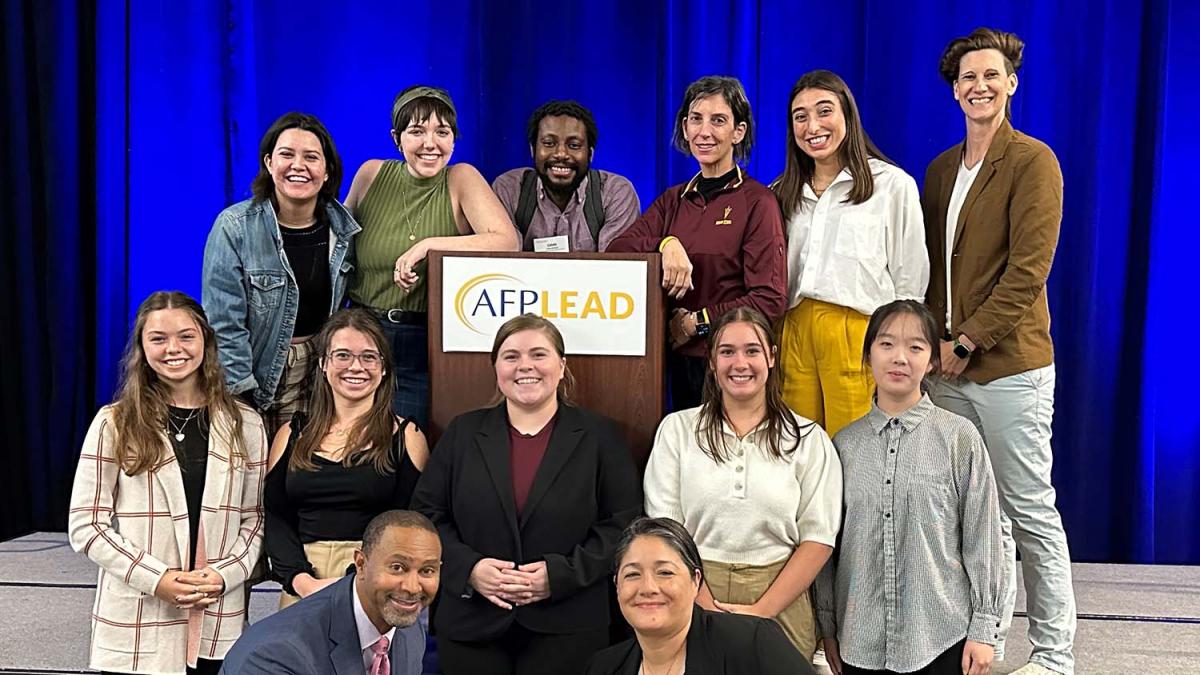Research and recommendations for effective, day-to-day nonprofit practice from ASU faculty, staff, students, and the nonprofit and philanthropic community.
Wednesday, November 30, 2022

Strategic planning for nonprofits involves the process of identifying overarching goals and objectives for growth. Researchers state that each element of this process is connected to another and leads to a unique outcome. Nonprofit leaders need to identify the guiding principles of strategic planning that prepares them for recovery when faced with disruptions.
Variations of trends contribute to disruptions, leading nonprofit CEO’s and executive directors to look at their leadership team and create an effective strategic plan. This grouping of nonprofit leaders creates what is referred as a “leadership cohort.” Leadership cohorts must lean on each other’s strengths to innovate and identify the group idea for their strategic planning process. The strategic planning process must consider various elements, such as the amount of time needed and whether or not a solution has been identified to meet the desired outcome.
Leadership cohorts must…
Read moreWednesday, November 16, 2022

Despite the growing attention paid to Diversity, Equity and Inclusion (DEI), data show that nonprofits struggle to attract and recruit a diverse workforce that includes a range of ages, ethnicities, genders, religions and abilities. This crisis contributes to the many challenges that prevent the sector from achieving longer-term sustainability and greater innovation. As stewards of the public good, the nonprofit sector is called on to embrace and celebrate the inherent worth of all people by encouraging inclusive work cultures.
What is workplace inclusion?
Workplace inclusion is the act of creating environments in which any individual or group can be and feel welcomed, respected, supported and valued to fully participate. An inclusive work culture embraces differences and respects all ideas, perspectives and options, increasing workplace talent, innovation, creativity and contributions.
The power of inclusion
A workplace where individuals of different backgrounds carry duties within the organizational structure may be diverse but not inclusive. Inclusion in the workplace is one of the most critical factors to improving retention rates in the nonprofit sector. When employees do not feel that their ideas, presence or contributions are valued, they will inevitably leave. When employees implicitly feel they do not fully belong where…
Read moreWednesday, November 9, 2022

Nonprofit sector growth has outpaced the resources available to sustain it while the need for services continues to grow. The increased competition that results detracts from resources available to fill this gap, according to a 2014 study by Bijetri Bose. While many claim that competition adds value by ensuring employee productivity and the use of innovation, the proof of such value is only evident within development departments.
The recent pandemic has only added to the restriction of resources in recent years adding undue pressure. Those that have survived with minimal disruption often report collaboration as being a key tool used to overcome such obstacles. Its use allows nonprofits to share resources, expenses, and knowledge to better leverage scarce resources allowing for broader reach, expanded capacity, greater efficiency, and an increase in impact.
There are a variety of recognized forms of collaboration with varying levels of risk and reward already identified. Use of innovation allows for limitless forms, potentially with undiscovered benefits, however. Robert Blair found that less than 3% of nonprofits reported not using any form of collaboration. The Bridgespan Group discovered that more than half of nonprofits used multiple collaborations at once and CEOs reported considering the majority…
Read moreWednesday, November 2, 2022

On Wednesday, October 19, a group of 12 students from Arizona State University traveled to Houston, Texas, to attend AFP Lead 2022. AFP Lead is a national conference where the best and brightest fundraisers gather to learn and share about their successes and trials in the nonprofit sector.
The group of students from ASU are all a part of the Nonprofit Leadership Alliance Student Association (NLASA), working towards the Certified Nonprofit Professional credential, and have been fundraising for months to be able to travel and attend this wonderful conference. I was one of the lucky students who was able to travel and learn so much from the professionals at the conference. We are so thankful we were able to not only learn more about how to further our careers in the nonprofit sector, but were able to take a break from the heat and actually wear sweaters in the cool Houston air.
Thursday morning we woke up early and ventured to the hotel where the conference was held. Our students were separated from the larger group and put together with a room full of ‘emerging leaders.’ We spent the day grouped with new leaders in the nonprofit sector learning vital skills for leadership and management. We listened to lectures, participated in reflections and had the chance to hear about real life experiences in the sector. We closed out the day by networking with some of the most…
Read moreThursday, October 27, 2022

An important factor that several nonprofits fail to initially consider is how they can sustain programming beyond the initial stages. It should be a high priority for any nonprofit to build itself into a stable entity before trying to save the world. Without stability, the organization will not be around long enough to continually realize its mission.
“For the social enterprise movement to realize its potential, organizations will need to invest in the recruitment, development, and growth of their future leaders, just as for-profits do. People provide the real growth capital for any enterprise — and make it possible for them to have an impact,” writes Gerald Chertavian in the Harvard Business Review. Leaders who wish to successfully run a nonprofit and continue to positively impact society in the future will need to focus their energy in three key areas: staff recruitment, fundraising, and donor and staff retention.
Recruiting
An essential part of creating an effective and sustainable nonprofit is recruiting the right people. Top talent is difficult to find and even more difficult to hire. “Managers across the public, private, and nonprofit sectors are increasingly recognizing that employees are their organization’s most important assets and that the most significant source of competitive advantage comes from having the best systems in place for…
Read more